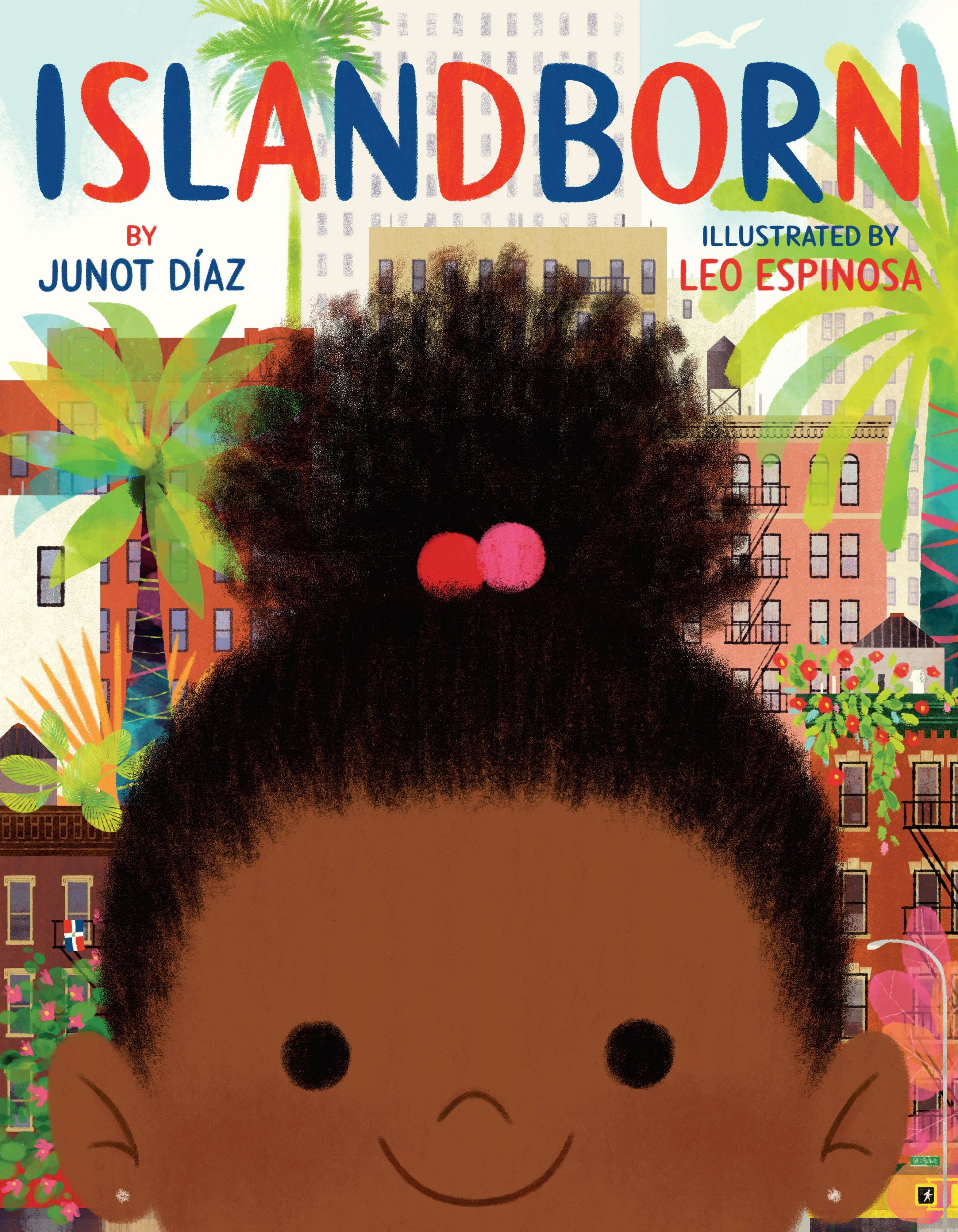
Islandborn
Written by Junot Diaz
Illustrated by Leo Espinosa
Dial, 2018, 48 pp.
ISBN: 978-0-7352-2986-0
Every kid in Lola’s school was from somewhere else. Hers was the school of faraway places (p.5).
Junot Diaz has created a vibrant, thought-provoking book in which Lola, a young African-Caribbean girl, is given a homework assignment to draw a picture of her first country. Lola left “the island” when she was a baby and doesn’t remember anything, so she goes on a quest to collect memories by listening to stories of the people and “the island” where her family once lived. Many remember the island with love–nonstop music, fruit that makes you cry, and poetry. Her mother recalls a hurricane passing through the island, destroying their beloved homes and the neighborhood. Islanders rebuilt their island under a new name because of Hurricane San Zenon, and Mr. Mir, the building superintendent, recalls a powerful green “monster” controlling and scaring the islanders long ago. The people worked together to eliminate it and find peace for their country. The illustrations by Leo Espinosa bring Lola’s world to life through people’s memories and magic. In her community’s memories, she learns the “real” stories that were hidden in the metaphors she had not known. For instance, the island “monster” was not an animal, but a ruthless dictator whose 30-year reign terrorized the islanders (Li, 2018, para. 4). Through her new understandings, Lola begins to piece together the stories now imbued with new meaning.
The picturebook shows how different forces, in this case political oppression, can drive people away from their beloved homes. Junot Diaz uses his curious heroine to encourage readers to understand their roots including treasuring those around them and embracing their collective memories. Some, like those on the island, must migrate to faraway places. People end up torn away from where they belong. To survive these situations, immigrants must seek new places with perhaps new opportunities, along with new challenges. Cultural heritage can be kept alive through memories and traditions and will live within people. The place where people come from will remain with a person, no matter how far away they might travel from it.
It’s even more fascinating for the reader to discover at the end that Lola’s pictures in her school project are replicas of Espinosa’s drawn images throughout the story. When the students hand in the assigned pictures, the teacher displays them, by saying, “Now our classroom has windows…Anytime you want to look at someone’s first home, all you have to do is look out of their window.” Diaz closes his story by Lola showing her classmates that they don’t necessarily have to recall a place to understand it. This beautiful text is entertaining and a perfect read-aloud for younger students. The central metaphor makes this story better suited for students grades three and above to understand the themes in the book of immigrant identity. The Color of Home by Mary Hoffman is a great pairing to this book, showing the struggles of a boy from Somalia trying to deal with the challenge of being in a new country, the U.S.
Junot Diaz is a Dominican-American writer who is also a professor at the Massachusetts Institute of Technology. He won the Pulitzer Prize for Fiction in 2008 for his book, The Brief Life of Oscar Wao (2008). Islandborn is his first venture into picturebooks.
Carla Goncalves, Coastal Carolina University
References
Li, G.Z. (2018, March 6). Junot Diaz on the Monster of ‘Islandborn.’ The Harvard Crimson. Retrieved from https://www.thecrimson.com/article/2018/3/6/junot-diaz-interview-islandborn/
WOW Review, Volume XI, Issue 1 by Worlds of Words is licensed under a Creative Commons Attribution-NonCommercial-ShareAlike 4.0 International License.
Based on a work at http://wowlit.org/volume-xi-issue-1/
